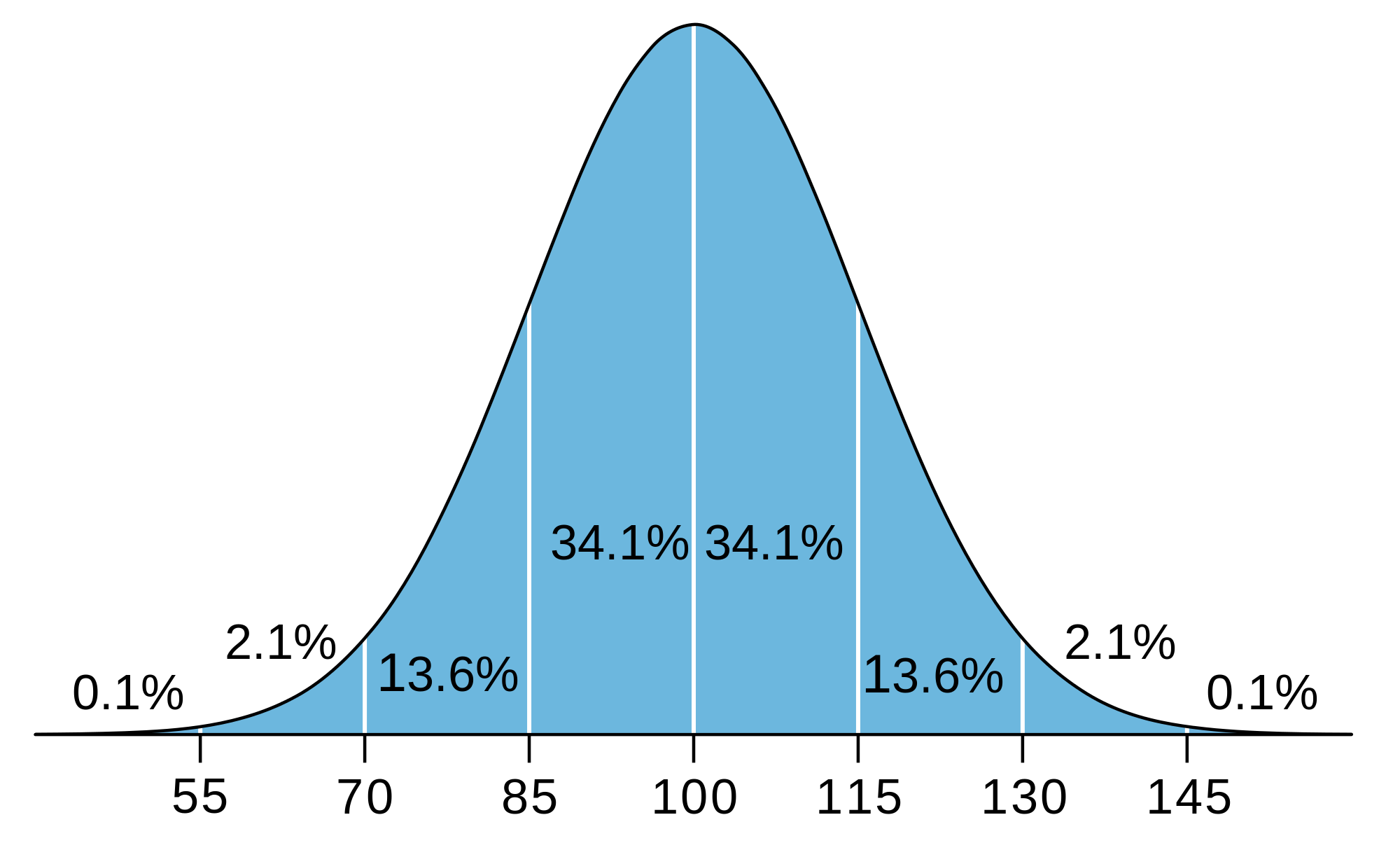Kevin Seifert and Rosemary Sutton
Teachers also need to be able to help parents and students understand test results. Consider the following scenarios.
-
Vanessa, a newly licensed physical education teacher, is applying for a job at a middle school. During the job interview the principal asks how she would incorporate key sixth grade math skills into her PE and health classes as the sixth-grade students in the previous year did not attain Adequate Yearly Progress in mathematics.
-
Danielle, a first-year science teacher in Ohio, is asked by Mr. Volderwell, a recent immigrant from Turkey and the parent of a tenth-grade son Marius, to help him understand test results. When Marius first arrived at school he took the Test of Cognitive Skills and scored on the eighty fifth percentile whereas on the state Science Graduation test he took later in the school year he was classified as “proficient” .
-
James, a third-year elementary school teacher, attends a class in gifted education over summer as standardized tests from the previous year indicated that while overall his class did well in reading the top 20 per cent of his students did not learn as much as expected.
-
Miguel, a 1st grade student, takes two tests in fall and the results indicate that his grade equivalent scores are 3.3 for reading and 3.0 for math. William’s parents want him immediately promoted into the second grade arguing that the test results indicate that he already can read and do math at the 3rd grade level. Greg, a first-grade teacher explains to William’s parents that a grade equivalent score of 3.3 does not mean William can do third grade work.

No Child Left Behind Act of 2001 (NCLB) and current Elementary and Secondary Education Act of 2015 (ESEA), have increased the complexity of the concepts and issues. ESSA remains to be a test-based accountability system.
,ESSA now allows schools to incorporate “one or more non-academic indicators that can help bring attention to the nation’s broader educational purposes.” (Mathis and Trujillo, 2016 p.3)
Every Student Succeeds Act (ESSA) – from the US Department of Education.
-
In this chapter, we focus on the information that beginning teachers need to know and start with some basic concepts.
ParseError: "(" expected (click for details)Callstack:
at (Under_Construction/Purgatory/Book:_Instructional_Methods_Strategies_and_Technologies_to_Meet_the_Needs_of_All_Learners_(Lombardi)/01:_Chapters/1.16:_Standardized_and_other_formal_assessments), /content/body/div[1]/div[3]/p[4]/@if, line 1, column 3
Uses of standardized tests
- Standardized tests are used for a variety of reasons and the same test is sometimes used for multiple purposes.
Assessing students’ progress in a wider context
Diagnosing student’s strengths and weaknesses
-
Standardized tests, along with interviews, classroom observations, medical examinations, and school records are used to help diagnose students’ strengths and weaknesses.
Selecting students for specific programs
-
Standardized tests are often used to select students for specific programs.
Assisting teachers’ planning
-
Norm referenced and criterion referenced standardized tests, among other sources of information about students, can help teachers make decisions about their instruction.
Accountability
-
Standardized test results are increasingly used to hold teachers and administrators accountable for students’ learning.
“As a teacher in a ‘non-testing’ subject area, I spend substantial instructional time supporting the standardized testing requirements. For example, our school has instituted ‘word of the day’, which encourages teachers to use, define, and incorporate terminology often used in the tests (e.g. “compare”, “oxymoron” etc.). I use the terms in my class as often as possible and incorporate them into written assignments.
I also often use test questions of similar formats to the standardized tests in my own subject assessments (e.g. multiple-choice questions with double negatives, short answer and extended response questions) as I believe that practice in the test question formats will help students be more successful in those subjects that are being assessed.”
Standards Based Reform in Education that was initiated in the USA in 1980s.
Types of standardized tests
Achievement tests
Standardized achievement tests are designed to be used for students in kindergarten through high school. For young children questions are presented orally, and students may respond by pointing to pictures, and the subtests are often not timed. For example, on the Iowa Test of Basic Skills designed for students are young as kindergarten the vocabulary test assesses listening vocabulary. The teacher reads a word and may also read a sentence containing the word. Students are then asked to choose one of three pictorial response options.
Achievement tests are used as one criterion for obtaining a license in a variety of professions including nursing, physical therapy, and social work, accounting, and law. Their use in teacher education is recent and is part of the increased accountability of public education and most States require that teacher education students take achievement tests to obtain a teaching license.
www.ets.org):
- Subject Assessments, these tests on general and subject-specific teaching skills and knowledge. They include both multiple-choice and constructed-response test items.
- Principles of Learning and Teaching (PLT) Tests assess general pedagogical knowledge at four grade levels: Early Childhood, K-6, 5-9, and 7-12. These tests are based on case studies and include constructed-response and multiple-choice items. Much of the content in this textbook is relevant to the PLT tests.
- Teaching Foundations Tests assess pedagogy in five areas: multi-subject (elementary), English, Language Arts, Mathematics, Science, and Social Science.
Diagnostic tests
Profiling skills and abilities: Some standardized tests are designed to diagnose strengths and weaknesses in skills, typically reading or mathematics skills. For example, an elementary school child may have difficulty in reading and one or more diagnostic tests would provide detailed information about three components: (1) word recognition, which includes phonological awareness (pronunciation), decoding, and spelling; (2) comprehension which includes vocabulary as well as reading and listening comprehension, and (3) fluency (Joshi 2003).
often administered individually by school psychologists, following standardized procedures. The examiner typically records not only the results on each question, but also observations of the child’s behavior such as distractibility or frustration. The results from the diagnostic standardized tests are used in conjunction with classroom observations, school and medical records, as well as interviews with teachers, parents and students to produce a profile of the student’s skills and abilities, and where appropriate diagnose a learning disability.
Aptitude tests
Predicting the future: Aptitude tests, like achievement tests, measure what students have learned, but rather than focusing on specific subject matter learned in school (e.g. math, science, English or social studies), the test items focus on verbal, quantitative, problem solving abilities that are learned in school or in the general culture (Linn & Miller, 2005).
http://www.collegeboard.com;http://www.act.org/).
High-stakes testing by states
Standards based assessment Academic content standards
“Students should be able to construct meaning through experiences with literature, cultural events and philosophical discussion” (no grade level indicated). (American Federation of Teachers, 2006, p. 6).
Students can define, compare and contrast, and provide a variety of examples of synonyms and antonyms.
“Students should apply knowledge of word origins, derivations, synonyms, antonyms, and idioms to determine the meaning of words (grade 4) (American Federation of Teachers, 2006, p. 6).
Alignment of standards, testing and classroom curriculum
Sampling content
sample the content, i.e. Measure some, but not all the standards every year. Content standards cannot be reliably assessed with only one or two items so the decision to assess one content standard often requires not assessing another. This means if there are too many content standards a significant proportion of them are not measured each year.
International testing
Testing in the Canadian provinces
International comparisons
Key Findings from PISA in Science
The United States remains in the middle of the rankings
Understanding test results
The Basics
Frequency distributions
| Score on test | Frequency | Central tendency measures |
| 17 | 1 | |
| 18 | 1 | |
| 19 | 0 | |
| 20 | 3 | |
| 21 | 2 | |
| 22 | 6 | Mode |
| 23 | 3 | Median |
| 24 | 2 | Mean |
| 25 | 0 | |
| 26 | 2 | |
| 27 | 6 | Mode |
| 28 | 2 | |
| 29 | 2 | |
| 30 | 1 | |
| TOTAL | 31 | |
Central tendency and variability
mean is calculated by adding up all the scores and dividing by the number of scores. The median is the “middle” score of the distribution—that is half of the scores are above the median and half are below. The median of the distribution is 23 because 15 scores are above 23 and 15 are below.
mode is the score that occurs most often. In Table 44 there are two modes 22 and 27 and so this distribution is described as bimodal. Calculating the mean, median and mode are important as each provides different information for teachers.
range, which is the lowest score subtracted from the lowest score.
standard deviation is based on how much, on average, all the scores deviate from the mean. In the exercise below we demonstrate how to calculate the standard deviation.
Calculating a standard deviation
- Order scores.
- Calculate the mean score.
- Calculate the deviations from the mean.
- Square the deviations from the mean.
- Calculate the mean of the squared deviations from the mean (i.e. sum the squared deviations from the mean then divide by the number of scores). This number is called the variance.
- Take the square root and you have calculated the standard deviation.
| Score(Step 1, order) | Deviation from the mean | Squared deviation from the mean | |
| 3 | -3 | 9 | |
| 3 | -3 | 9 | |
| 4 | -2 | 4 | (Step 4-5, complete the calculations) |
| 5 | -1 | 1 | Formula: |
| 5 | -1 | 1 | Standard deviation NN = Number of scores |
| 6 | 0 | 0 | |
| 7 | 1 | 1 | |
| 7 | 1 | 1 | |
| 7 | 1 | 1 | |
| 9 | 3 | 9 | |
| 10 | 4 | 4 | |
| TOTAL = 66 | | 40 | |
| (Step 2, calculate mean)MEAN66/11=6 | | (Step 3, calculate deviations)Mean=40/11=3.64 | (Step 6, find the standard deviation)Standard deviation=3.64=1.91 |
The normal distribution
Wikimedia.org
Kinds of test scores
standard score expresses performance on a test in terms of standard deviation units above of below the mean (Linn & Miller, 2005). There are a variety of standard scores:
Z-score: One type of standard score is a z-score, in which the mean is 0 and the standard deviation is 1. This means that a z-score tells us directly how many standard deviations the score is above or below the mean. For example, if a student receives a z score of 2 her score is two standard deviations above the mean or the eighty fourth percentile. A student receiving a z score of -1.5 scored one and one-half deviations below the mean. Any score from a normal distribution can be converted to a z score if the mean and standard deviation is known. The formula is:
Standard deviation
T-score: A T-score has a mean of 50 and a standard deviation of 10. This means that a T-score of 70 is two standard deviations above the mean and so is equivalent to a z-score of 2.
Stanines: Stanines (pronounced stanines) are often used for reporting students’ scores and are based on a standard nine-point scale and with a mean of 5 and a standard deviation of 2. They are only reported as whole numbers and Figure 11-10 shows their relation to the normal curve.
ParseError: "(" expected (click for details)Callstack:
at (Under_Construction/Purgatory/Book:_Instructional_Methods_Strategies_and_Technologies_to_Meet_the_Needs_of_All_Learners_(Lombardi)/01:_Chapters/1.16:_Standardized_and_other_formal_assessments), /content/body/div[2]/div[2]/div/p[1]/@if, line 1, column 3
ParseError: "(" expected (click for details)Callstack:
at (Under_Construction/Purgatory/Book:_Instructional_Methods_Strategies_and_Technologies_to_Meet_the_Needs_of_All_Learners_(Lombardi)/01:_Chapters/1.16:_Standardized_and_other_formal_assessments), /content/body/div[2]/div[3]/p[4]/@if, line 1, column 3





